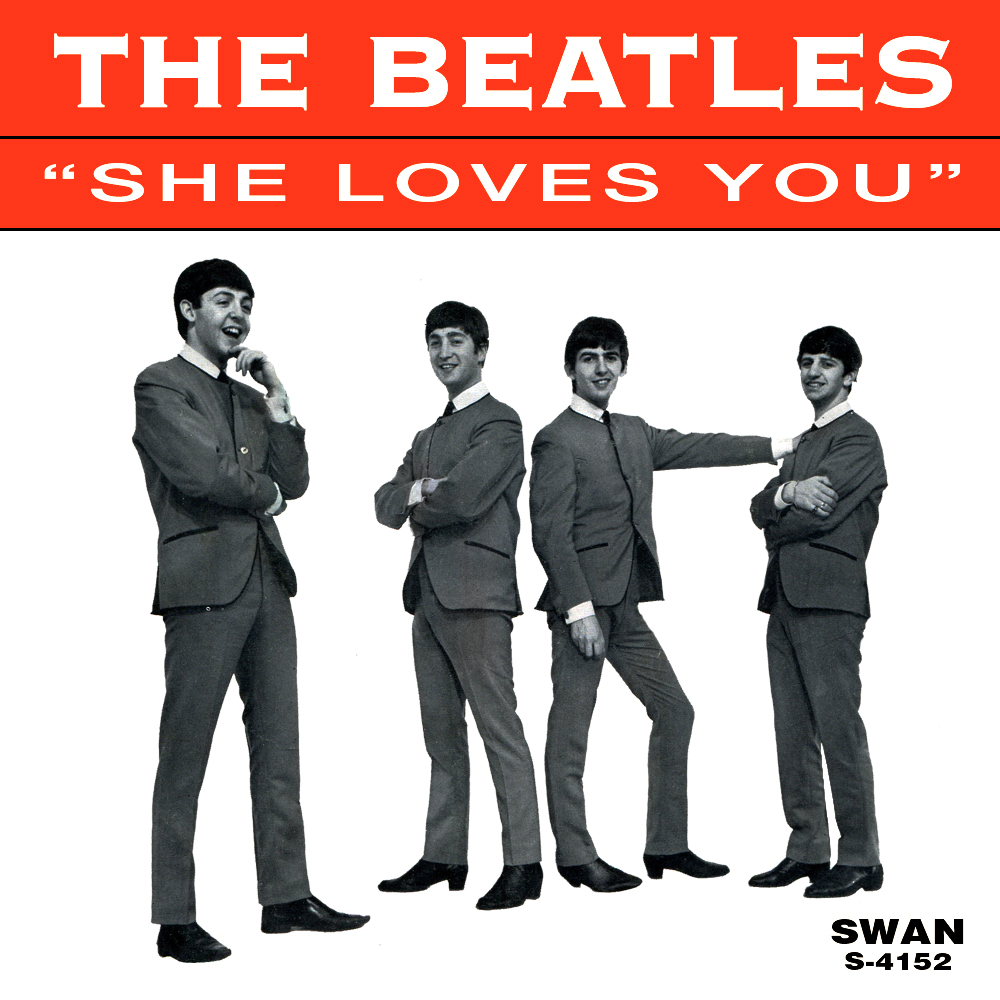
Writers: Lennon-McCartney
Recorded: July 1, 1963
Released: September 16, 1963
15 weeks; no. 1
On the afternoon of July 1st, 1963, the Beatles were about to record “She Loves You” at EMI studios when all hell broke loose. As Geoff Emerick — then an assistant at Abbey Road, later the Beatles’ engineer — recalled, “The huge crowd of girls that had gathered outside broke through the front door. . . . Scores of hysterical, screaming girls [were] racing down the corridors, being chased by a handful of out-of-breath, beleaguered London bobbies.” The disruption may have been a blessing in disguise for the Beatles, who promptly banged out one of the most exuberant pop singles of all time. “[The chaos] helped spark a new level of energy in the group’s playing,” Emerick wrote.
Lennon and McCartney began writing “She Loves You” in a tour van, then did the bulk of the work in the Turk’s Hotel in Newcastle, sitting on twin beds with acoustic guitars. The breakthrough in the lyrics was the introduction of a third person, shaking up the typical I-love-you formula. The variation was inspired by Bobby Rydell’s “Forget Him,” a hit in the U.K. “It was someone bringing a message,” said McCartney. “It wasn’t us anymore. There’s a little distance we managed to put in it, which was quite interesting.”
Still, something was missing. “We’d written the song and we needed more,” Lennon said, “so we had ‘yeah, yeah, yeah’ and it caught on. I don’t exactly know where we got it — Lonnie Donegan always did it. Elvis did that in ‘All Shook Up.’”
They completed “She Loves You” in McCartney’s house back in Liverpool. When his father heard the song, he said, “Son, there’s enough Americanisms around. Couldn’t you sing, ‘Yes, yes, yes,’ just for once?” McCartney said, “You don’t understand, Dad. It wouldn’t work.”
For all the raw immediacy of its sound, the song also signaled a new level of sophistication for the band as songwriters and arrangers. “She Loves You” opens with the chorus instead of the first verse for extra punch — a George Martin suggestion. The final touch was the distinctive chord that ends the chorus — Harrison’s idea — which sounded “corny” to Martin. “He thought we were joking,” said McCartney. “But it didn’t work without it, so we kept it in and eventually [he] was convinced.”
The appearance by the Beatles on ITV’s Sunday Night at the London Palladium on October 13th, 1963, culminating in the band’s performance of “She Loves You,” is often considered the tipping point of Beatlemania. The Beatles would go on to triumph after triumph as the 1960s went on, but in Great Britain, “She Loves You” remained the bestselling single of the decade.
